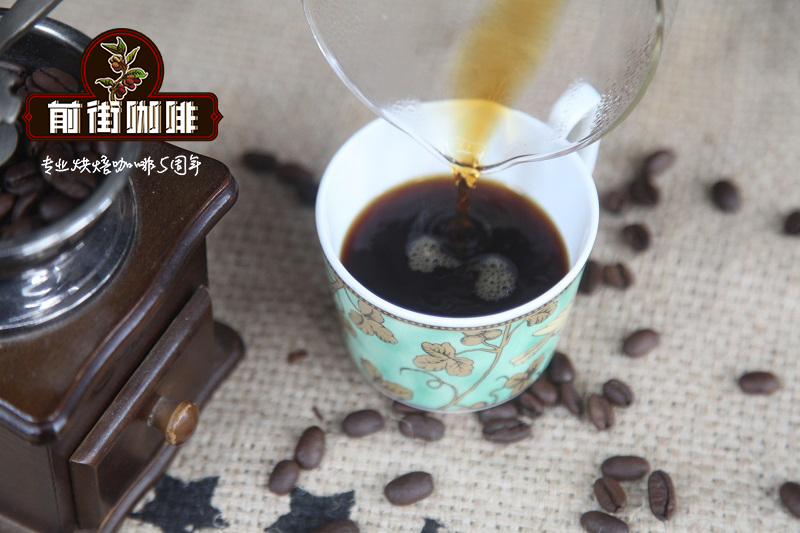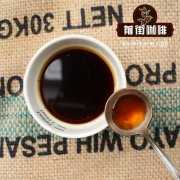How to correct the bean grinder? How does the Italian bean grinder grind the fastest?

Professional coffee knowledge exchange more coffee bean information please follow the coffee workshop (Wechat official account cafe_style)
As there are certain differences between each batch of the bean grinder, the current street coffee will first correct it when it gets a new bean grinder.
Perhaps some people are curious about how to correct the bean grinder when they are at home.
Today, Qianjie Coffee will share with you how to correct the bean grinder at home!
First of all, Qianjie Coffee will first tighten the scale of the grinding plate and hear the sound of friction between the cutters. Then screw the grinding plate to the grinding scale suggested by the business, usually our hand grinding is about the thickness of white granulated sugar, so we can use white granulated sugar for reference and comparison! Then fine-tune it according to the degree of grinding required by your hand.
The above is a simple way to correct the bean grinder at home. Next, Qianjie Coffee to share with you, more professional correction.
Since you have disassembled the cutter head, you need to recalibrate the grinding as follows:
First of all, slowly tighten the cutter head, and power on, when you hear the cutter head collision, immediately adjust to avoid cutter head wear.
If it is hand grinding, we will first determine the cup test grinding; you can buy a cup test screen, the general cup test grinding degree pass rate of 70%, 75%. The degree of grinding by hand will be thicker than that measured by the cup, and the pass rate of hand grinding used in Qianjie coffee is 58%.
The above parameters are for reference only!
By the way, I would like to share with you how to adjust the Italian bean grinder!
Preparatory work
First of all, there is a difference between a single bean grinder and an Italian bean grinder. Before we start, make sure that your bean grinder is suitable for making Italian coffee. The adjustment range of the scale of the single mill is large, and the grinding particles are generally thicker, which can not be fine-tuned and can not meet the needs of making espresso.
In addition, when you get a newly purchased coffee bean and plan to grind it, you can first get the recommended extraction data from the seller. Please make sure that the inside of your bean grinder is clean before you start the adjustment and calibration. Remove the cutter head, clean it with a brush or blow it with air. Try to clean up the coffee powder left in the bean grinder.
Grinding process
The first step is to adjust the dial of the bean grinder to infinitely small (considering the cutter head wear in different stores, we are used to grinding it in an extreme way). Then clear the weight of the coffee machine handle on the electronic scale and weigh it on the electronic scale after receiving the powder. The goal is to weigh 18 grams of powder, cloth powder, and use our usual pressure powder (or use a constant powder press).
Preheat and boil the head, then extract it with Italian concentration.
Of course, before the first drop of coffee is set aside within 8 seconds of the start of the extraction, then decisively stop the extraction and proceed to the next step-to thicken the scale by 1 grid (general brand bean grinders on the market will have a digital scale. For example, we used the grinding scale is 1 scale, and then try 2 scale). Then we weigh 18g powder and try to extract the concentrated solution. If the obvious over-extraction phenomenon still exists, we decisively stop the extraction, and then adjust the scale to 1 grid, and then try to extract.
Repeat the steps of adjusting the scale and extraction until the dial is adjusted to the point where the concentrate can flow out normally. Of course, if you are a glutton, you can quickly get the desired goal scale through the comprehensive judgment of baking degree and graininess.
In the third step, we began to test the extraction rate and taste the taste of the concentrate. When the concentrate flows out normally, we prepare a coffee cup and use it to weigh the coffee liquid after clearing the weight on the electronic scale. Because we use 18g powder, according to the extraction standard of espresso, generally speaking, the ratio of powder to water is controlled within the range of 1mm, 2m, 1v, 2.5 (the ratio of powder to water, that is, the ratio of powder to extract weight, if we weigh 18g powder, the target extraction gram weight is between 36g-45g).
In the fourth step, after the flow rate of the coffee liquid begins to return to normal, it begins to correct the taste. During the extraction time of 20s-25s, can we keep the extraction state within the range of using 18g powder to extract 36g-45g concentrate.
If the concentrated taste has a strong sense of coke, bitterness, paste, astringency and miscellaneous feeling, it is excessive extraction, and then the grinding plate scale needs to be fine-tuned, thickened 0.5 grid, and then tested.
If you see that the flow rate of the coffee liquid during the extraction is a little fast, you may still be able to get a cup of espresso with a gram weight within the standard extraction range between 36g-45g in about 25 seconds, but the taste is sour and the body is weak, then consider that this cup of coffee should be insufficient in extraction, so adjust the dial to 0.25g. The extraction test of the concentrate was carried out again, and the time was timed with a stopwatch.
Yes, this idea sounds tedious, but in fact it is by controlling the amount of powder and the target? Extract weight to fine-tune the degree of grinding, first lock the large interval, and then fine-tune the small interval to find the most suitable degree of grinding.
After repeating the above steps once or twice, you can approach the target scale.
Step 6, up to now, if the flow rate of concentrated liquid extraction is stable and the color of oil is normal, it will probably reach the standard value. However, if the flow rate is still a little fast / slow, the conditional bean grinder can fine-tune the 0.1 scale. If, unfortunately, you find that the grinding degree you need is right between the two scales, but the bean grinder does not have an intermediate scale to choose from, then you can consider adjusting the crushing power correction.
Using this method of grinding, you can complete the task in less than 200g beans, which seems complicated, but because each adjustment has rules to follow, rather than luck, it is more labor-saving, labor-saving and cost-saving, so give it a try.
End
Important Notice :
前街咖啡 FrontStreet Coffee has moved to new addredd:
FrontStreet Coffee Address: 315,Donghua East Road,GuangZhou
Tel:020 38364473
- Prev

What does Ethiopian outbound coffee mean? what coffee tastes best in Ethiopia?
Professional coffee knowledge exchange more coffee bean information please follow the coffee workshop (Wechat official account cafe_style) Ethiopia, as a big coffee growing country in Africa, has a large output, of course, because of its high altitude, the volcanic soil in the volcanic area is rich in nutrition, great temperature difference between day and night, and rich precipitation, so the quality of Ethiopian coffee has always been guaranteed, flavor,
- Next

Do you grow litchi orchid coffee beans in Panama? What kind of coffee can be grown in Panama
Professional coffee knowledge exchange more coffee bean information please follow the coffee workshop (Wechat official account cafe_style) Panama ushered in a good winter 2019! This year's production season is not only a recovery of output, the overall production capacity has also set a high point in recent years, the key point is that the quality is also quite good year ~ of course, for the landowners, it is not so happy to see this kind of "yield year" phenomenon.
Related
- Beginners will see the "Coffee pull flower" guide!
- What is the difference between ice blog purified milk and ordinary milk coffee?
- Why is the Philippines the largest producer of crops in Liberia?
- For coffee extraction, should the fine powder be retained?
- How does extracted espresso fill pressed powder? How much strength does it take to press the powder?
- How to make jasmine cold extract coffee? Is the jasmine + latte good?
- Will this little toy really make the coffee taste better? How does Lily Drip affect coffee extraction?
- Will the action of slapping the filter cup also affect coffee extraction?
- What's the difference between powder-to-water ratio and powder-to-liquid ratio?
- What is the Ethiopian local species? What does it have to do with Heirloom native species?

